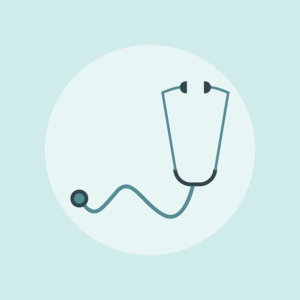Do you ever feel like health insurance is a foreign language? If you do, we understand, and we’re here to tell you that you’re not alone.
According to this recent survey, 26% of Americans avoided care or treatment because they were unsure what their insurance covered. Having health insurance literacy is important because the more you know, the better off you are when it comes to using your coverage and getting the medical care you need.
Below we explain the most commonly used health insurance terms and answer frequently asked questions.
- Premium
- Co-payment
- Deductible
- Out-of-Pocket Maximum/Limit
- Copay
- Co-insurance
- In-Network
- Covered Services
- Excluded Services
- Open Enrollment Period
- Special Enrollment Period
- Subsidy
- Tax credit
- Health Insurance Marketplace
- Essential Health Benefits
- Short-Term Health Plan
- Schedule of Benefits
- Frequently Asked Questions
What should I know?
Premium
The total amount the insured pays each month for health coverage.
Co-Payment
A fixed amount the insured pays out-of-pocket for covered medical services, with the remaining balance covered by the insurance company.
Deductible
A fixed amount the insured pays before the insurance company will pay for any covered services.
Out-of-Pocket Maximum/Limit
The total amount the insured pays out-of-pocket for covered services in a plan year. When the limit is met, the health plan pays 100% of the costs for the remainder of the plan year.
Co-Pay
The fixed rate that the insured pays after the deductible has been met.
Coinsurance
The percentage that the insured pays after the deductible has been met.
For example: If the insured has 80/20 coinsurance, the insured pays 20% for covered services while the insurance company pays the remaining 80%.
In-Network
A provider or health care facility that is part of a health plan’s network in which covered services are provided at discounted rates.
 Covered Services
Covered Services
These are services that your health insurance plan has agreed to pay, also known as your plan benefits.
Excluded Services
These are services that your health insurance plan does not pay for or cover.
Open Enrollment Period
The yearly period when people can enroll in a new health plan or switch to a different plan. Typically, Open Enrollment runs from November 1 to December 15, and plans are effective January 1.
Special Enrollment Period
The time outside of Open Enrollment when people can enroll in a health plan if they have a qualifying life event. If a person qualifies for a SEP, they typically have up to 60 days following the event to enroll.
Subsidy
Financial assistance from the government that helps pay for health insurance. Eligibility depends on household income, family size, and zip code.
Tax credit
A credit that helps reduce a family or individuals’ monthly payment and are only available to those who are enrolled in a plan through the federal insurance marketplace.
Health Insurance Marketplace
Also known as the “Marketplace” or “exchange”, is a service that helps people find an affordable health plan and is run by the federal government, for most states. Every health plan available covers a set of essential health benefits.
Essential Health Benefits
Every health insurance plan available on the Marketplace must cover a set of 10 categories of services.
- Doctor’s services
- Preventative and wellness services
- Inpatient and outpatient hospital care
- Prescription drug coverage
- Pregnancy and childbirth
- Pediatric services, including oral and vision care
- Laboratory services
- Emergency services
- Mental health services
- Rehabilitative and habilitative services and devices
Short-Term Health Plan
A health plan with a limited duration, typically a few months to a year, used to bridge the gap between coverage.
Schedule of Benefits
A document that outlines the various services covered under a health plan, along with the fees associated with each service and treatment.
FAQ’s
How do I know what my plan covers?
Reference your Schedule of Benefits for all services and treatments covered by your health insurance plan. You can also contact the insurance company, or your agent, to request a copy.
How does my deductible affect my premium?
Premium costs vary but plans with a lower deductible tend to have a higher monthly premium than those with a higher deductible.
What’s the difference between in-network and out-of-network providers?
In-network providers or health care facilities are part of a health plan’s network of providers and provide services at a discount negotiated with the insurance company. Out-of-network providers or facilities don’t have a contract with the health insurance company; therefore, no discount is provided on covered services. Health care services are significantly lower with an in-network provider.
What is considered a Qualifying Life Event?
A change in your situation can make you eligible for a Special Enrollment Period, allowing you to enroll in or change plans outside of Open Enrollment. You may qualify if you experience one of the following life events in the last 60 days.

- Got married
- Had a baby
- Got divorced or separated and lost coverage
- Moved to a new zip code or county
- Loss of health insurance, individual and job-based
Important: You do not qualify for a Special Enrollment Period if you voluntarily drop coverage or don’t pay your premium.
Go to Healthcare.gov to see a complete list of Qualifying Life Events.
When is Open Enrollment?
The Open Enrollment period is typically from November 1 until December 15 to enroll in a health plan through the Marketplace. All plans are effective January 1.
Can I get insurance outside of Open Enrollment?
Yes. You may qualify for a Special Enrollment Period (SEP) if you have a certain life event. If you do not qualify, there are other plans available that will bridge the gap until the next Open Enrollment period.
Should I go uninsured?
No, we really don’t suggest it. Making health a priority for you and your family is one of the best ways of protecting them and showing you care.
How do I enroll in a health plan?
That’s simple! Call LEB Insurance Group at 920.243.4100 or request a quote online. We’ll connect you with one of our licensed agents to help find a plan that best fits your needs.
UPDATED – 10/25/2021












